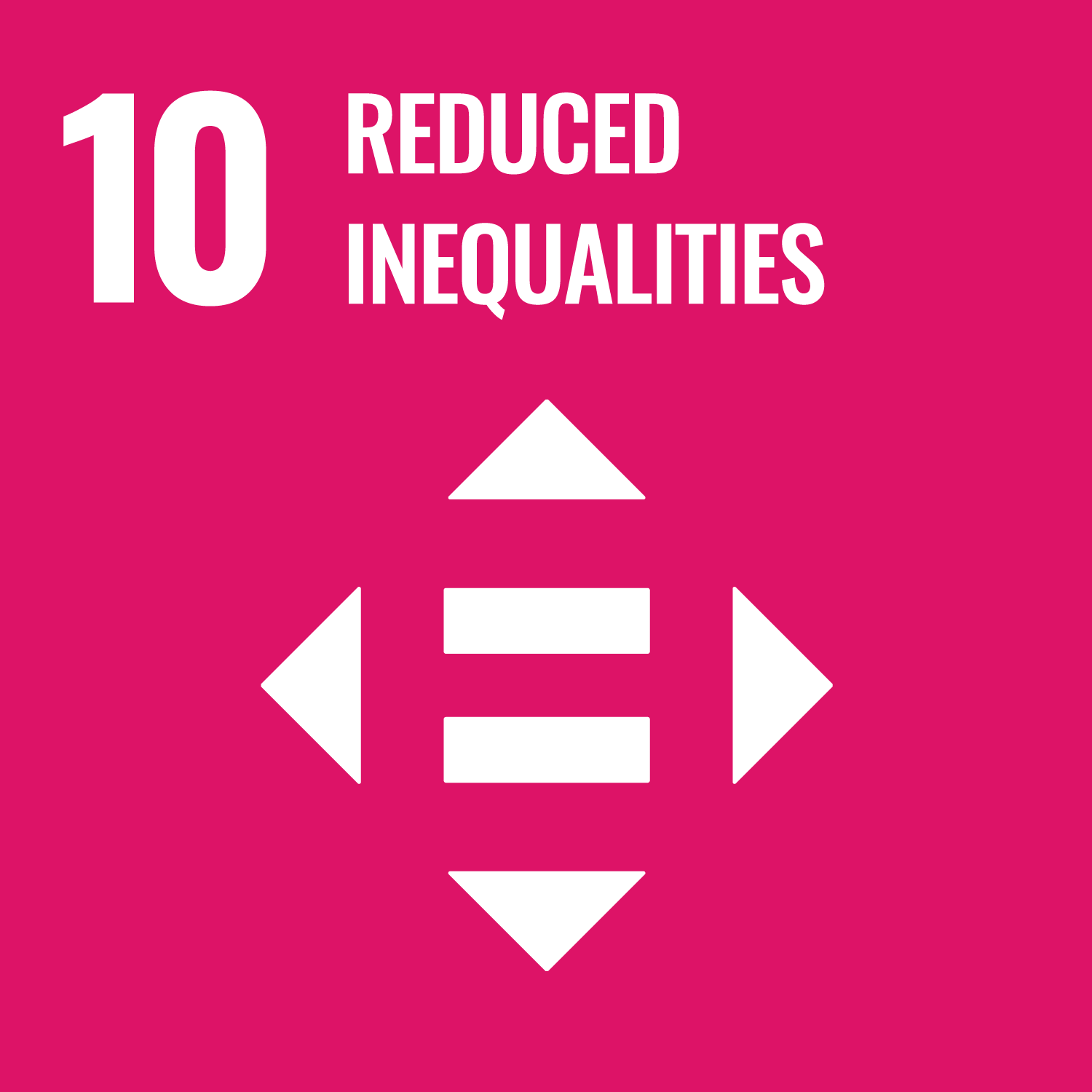Zina Houhamdi, Ph.D
Director, Cybersecurity Program
Al Ain Campus

Biography
An associate professor currently working in Software Engineering department at Al Ain University with more than 23 years’ experience in academic field. She develops her research activities at Computer Engineering and Automatic Laboratory and Energetic Systems Modeling Laboratory. Her research interest mainly focusses on software engineering, Internet of Thing, Big Data, Information Systems (Business Informatics) and Artificial Intelligence particularly in Multi-Agents System Modelling. Her current project focuses on 'Information Quality' and 'Decision Making Process'. She published more than 40 refereed conferences, journals. Officially she obtained her master and PhD in Software Engineering from Badji Mokhtar University in Algeria. Both degrees were related to the development of models in order to increase software reusability. She supervised many bachelor and master capstone projects.
Education
Ph.D., Software Engineering, Annaba University, Algeria
Master, Information System, Annaba University, Algeria
Bachelor (Engineer), Computer Engineering, Annaba University, Algeria
Research Interests
Software Engineering, Multi-Agents Testing, Software Modeling and Analysis, Software Verification, Validation and Testing, Formal Methods, Petri nets Modeling and applications, Ontology in Multi-Agent, Big data.
Selected Publications
- Houhamdi Z. (2019). Prediction Process in Multi-Agent System Online Monitoring: Centralized and Distributed Approaches. TEM Journal, Vol.8, No.2, pp.364-371.
- Houhamdi Z., Athamena B., Abuzaineddin, R., & Muhairat, M. (2019). A multi-agent system for course timetable generation. TEM Journal, Vol.8, No.1, pp.211-221.
- Houhamdi Z. & Athamena B. (2019). Impacts of information quality on decision-making. Global Business and Economics Review, Vol.21, No.1, pp.26-42.
- Athamena B. & Houhamdi Z. (2018). Model for the decision-making process with big data. Journal of Theoretical and Applied Information Technology, Vol.96, No.17, pp.5951-5961.
- Houhamdi Z. & Athamena B. (2017). An execution model for exception handling in a multi-agent system. 16th International Conference on Modeling and Applied Simulation (MAS2017), pp.81-89.
- Athamena B. & Houhamdi Z. (2017). An Exception Management Model in Multi-Agents Systems. Journal of Computer Science, Vol.13, No.5, pp.140-152.
- Houhamdi Z. & Athamena B. (2016). Data Freshness Evaluation in Data Integration Systems. International Journal of Economics and Business Research, Vol.11, No.2, pp.132-144.
- Athamena B. & Houhamdi Z. (2015). A Distributed Approach for Monitoring and Diagnosis of Multi-Agent Plan. IEEE - SAI Intelligent Systems Conference (IntelliSys), November 10-11, 2015, London, UK, pp.863-870.
- Houhamdi Z. & Athamena B. (2015). Ontology-based Knowledge Management. International Journal of Engineering and Technology, Vol.7, No.1, pp.51-62.
- Houhamdi Z. & Athamena B. (2015). Information Quality Framework. Global Business & Economics Anthology, Vol.I, pp.181-191.
Teaching Courses
Undergraduate: Introduction to Software engineering, Requirement Engineering, Software Design, Software Validation and Verification, Data structure, Operating System, Object-oriented Programming, Database, Artificial intelligence, Compiler, user interface Management System, Information system Development, System Programming, Project Seminar, Structured and Object-Oriented Systems Analysis and Design, Project Management.
Graduate: Modelling and Information Retrieval on XML-Data web, Software Reuse, Case-Based Reasoning.
Expertise related to UN Sustainable Development Goals
In 2015, UN member states agreed to 17 global Sustainable Development Goals (SDGs) to end poverty, protect the planet and ensure prosperity for all.
This person’s work contributes towards the following SDG(s):



Memberships
Signal Processing and Automatic Control Laboratory, Annaba University, Algeria
Energetic Systems Modeling Laboratory, Biskra University, Algeria.
Prediction Process in Multi-Agent System Online Monitoring: Centralized and Distributed Approaches
Published in: TEM Journal
May 01, 2019
This paper discusses the prediction process, which is the main step of the online monitoring process for a multi-agent plan. The monitoring process uses a relational model to estimate the internal status of the system, which is dynamic (changes over time). Unfortunately, the agents have partial observability of the environment; thus, the monitoring process cannot accurately determine the system status (known in the literature as belief state) at any instant. The prediction process is composed of two stages: a simulation stage (prediction of all possible system states at the succeeding time) and a clipping stage (elimination of states that are incompatible with the observations or with the constraints from predicted system states).
A Multi-Agent System for Course Timetable Generation
Published in: TEM Journal
Mar 01, 2019
In the university, course scheduling and preparation for each semester can be defined as the process of determining what courses to offer, the number of sections needed for each course, assigning of a faculty member to teach each section, and allocating a timeslot and a classroom for each section to avoid clashes. The output of this activity (which is a timetable) affects every faculty member and student in various departments. This process is essentially broken down into three main stages: determining the courses to be offered as well as their section numbers, assigning faculty members to different sections, and scheduling of the sections into timeslots and classrooms.This paper investigates each of these steps and congregates them in a scheduling and Decision Support System (DSS). The DSS is used to make easy the process of course offerings by taking into consideration the students’ suggestions because the department resources are limited. The faculty member preferences are also considered in the assignment of sections for the sake of lessening disappointments in the department. Also, the couples (faculty, section) are planned into university timeslots based on faculty member preferences. Our proposed system considers student suggestions and preferences and the time availability of a faculty member since it minimizes disappointments and avoids conflicts between faculty members and classrooms and courses.
Impacts of information quality on decision-making
Published in: Global Business and Economics Review
Jan 01, 2019
Prior investigations have pointed out that an understanding of the impacts of information quality is essential to the organisation's success. Nevertheless, few investigations have analysed the impacts of information quality in a business context. This paper analyses the impacts of information quality on the decision-making process in a systematic way. To reach this goal, we suggest a pragmatic approach that allows estimation of information quality categories and dimensions. The results of the proposed approach indicate that intrinsic and contextual categories of information quality affect decision quality in a positive manner. On the other hand, decision quality is not necessarily influenced by representational category of the information quality. Additionally, the findings suggest that, contrary to consistency, increased information completeness and accuracy significantly improves the quality of the decision. Consequently, not all of the categories of information quality have the same effectiveness for the amelioration of decision quality.
Model for Decision-Making Process with Big Data
Published in: Journal of Theoretical and Applied Information Technology
Sep 30, 2018
Currently, Big Data is an important concept due to the pervasive use of electronic devices, computerization, and information sharing worldwide. Despite the focus on Big Data, studies lack an explicit definition of the Big Data concept. Big Data is assumed to present natural solutions to government and private sectors, but the practical results of Big Data in other sectors are still unknown. This paper discusses Big Data concerning two perspectives: decision-making process and knowledge creation theory. The main finding of this investigation is that Big Data represents an exceptional source to generate new knowledge that supports the decision-making process in companies.
An execution model for exception handling in a multi-agent system
Published in: Conference on Modeling and Applied Simulation (MAS2017)
Sep 01, 2017
Data freshness evaluation in data integration systems
Published in: International Journal of Economics and Business Research
Mar 14, 2016
The availability of data in different datasources increases highly the demand on accessing this data in a uniform and generalised way, especially in decision making applications which require an exhaustive investigation and examination of the data. The data quality represents an essential characteristic requested by the users, particularity with the arrival of the data integration systems (DIS) which integrate data from multiple datasources and present them to the users as single database. This paper discusses the data quality evaluation in DIS systems. Precisely, it addresses the issues of the quality evaluation of the data delivered to the end users as results to their queries and the verification of the achievement of users' quality expectations. Besides, it analyses how to improve the DIS systems by using quality scales and to enforce data quality. We propose to study one quality attribute, to analyse its effect in a DIS system, and to suggest methods for its assessment. Between the quality attributes that have been defined, this paper investigates the more significant one which is data freshness.
A distributed approach for multi-agent plan monitorine and diagnosis
Published in: SAI Intelligent Systems Conference (IntelliSys)
Nov 10, 2015
Information quality framework
Published in: GLOBAL BUSINESS & ECONOMICS ANTHOLOGY
Mar 01, 2015
This paper discusses a general, meaningful and repeated problem in information systems practice: under investment in the client information quality. Many organizations need precise financial models so as to initiate investments in their information systems and associated processes. Nevertheless, there are no broadly recognized strategies to accurately combining the expenses and profits of potential quality enhancement to client information. This can result in inadequate quality client information which influences the organizational goals. Further, the absence of such a strategy impedes the ability for Information System (IS) developers to discuss the investing case in betterments since the organizational resources access is dependent on such a case being made. To address this problem, we propose and assess a structure for generating financial models of the expenses and profits of client information quality. These models can be exploited to select and prioritize from various candidate interventions across multiple client processes and information resources, and to set up a business case for the society to make the investment. As the work tried to provide and evaluate an artifact instead of answer a question, design science was identified as the most suitable research approach. With design science, utility of a conceived artifact is precisely established as the goal rather than the theory truth. So instead of following a process of expressing and answering a sequence of research questions, design science develops by constructing and evaluating an artifact. In this case, the framework is built as an abstract artifact, incorporating models, measures and a method.
Ontology-based Knowledge Management
Published in: International Journal of Engineering and Technology
Jan 01, 2015
It is recognized that knowledge has a considerable usefulness in people's daily life and all businesses. The current paper discusses a knowledge description using ontology and its application in Multi Agent Systems (MAS). The presented work proposes to reach a powerful relationship between MAS and Knowledge Management (KM), principally by introducing results achieved in the semantic web domain to MAS. The proposed method is to apply KM in MAS using ontology, wherever undetermined knowledge is absent. This is an appropriate model for various cases particularly when we require experience management.
Structured system test suite generation process for multi-agent system
Published in: International Journal on Computer Science and Engineering
Apr 01, 2014
In recent years, Agent-Oriented Software Engineering (AOSE) methodologies are proposed to develop complex distributed systems based upon the agent paradigm. The implementation for such systems has usually the form of Multi-Agent Systems (MAS). MAS’testing is a challenging task because these systems are often programmed to be autonomous and deliberative, and they operate in an open world, which requires context awareness. In this paper, we introduce a novel approach for goal-oriented software system testing. It specifies a testing process that complements the goal oriented methodology Tropos and reinforces the mutual relationship between goal analysis and testing. Furthermore, it defines a structured and comprehensive system test suite derivation process for engineering software agents by providing a systematic way of deriving test cases from goal analysis.
A Petri Net Based Multi-Agent System Behavioral Testing
Published in: Canadian Center of Science and Education (CCSE)
Mar 01, 2012
In Multi-Agent System (MAS), developers concentrate on creating design models and evolving them, from higher level models to lower level models, in several steps. Considerable part of MAS implementations is automatically produced from the design models. If a design model contains faults, they are passed to the generated implementations. Practical model validation techniques are required to discover and delete faults in abstract design models. In this paper, we introduce a formal approach for MAS design testing. It specifies a testing process that complements Multi-agent Systems Engineering (MaSE) methodology and strengthens the mutual relationship between UML and MAS. Besides, it defines a structured and comprehensive testing process for engineering software agents at the design level by providing a systematic way of converting the MAS design models to UML design diagram. Then a Petri Net (PN) diagram is generated from the UML models to simulate the behavior of the MAS system. Finally, because Petri Nets (PNs) are formal models, their analysis techniques can be applied to automatic MAS behavioral testing.
Structured Acceptance Test Suite Generation Process for Multi-Agent System
Published in: Computer and Information Science
Jan 01, 2012
In recent years, Agent-Oriented Software Engineering (AOSE) methodologies are proposed to develop complex distributed systems based upon the agent paradigm. The implementation for such systems has usually the form of Multi-Agent Systems (MAS). Testing of MAS is a challenging task because these systems are often programmed to be autonomous and deliberative, and they operate in an open world, which requires context awareness. In this paper, we introduce a novel approach for goal-oriented software acceptance testing. It specifies a testing process that complements the goal oriented methodology Tropos and strengthens the mutual relationship between goal analysis and testing. Furthermore, it defines a structured and comprehensive acceptance testing process for engineering software agents by providing a systematic way of deriving test cases from goal analysis.
A Petri net based agent behavioral testing
Published in: American Journal of Applied Sciences
Jan 01, 2012
In Multi-Agent System (MAS), developers concentrate on creating design models and evolving them, from higher level models to lower level models, in several steps. Considerable part of MAS implementations is automatically produced from the design models. If a design model contains faults, they are passed to the generated implementations. Practical model validation techniques are required to discover and delete faults in abstract design models. We introduce a formal approach for agent design testing. It specifies a testing process that complements Multi-agent Systems Engineering (MaSE) methodology and strengthens the mutual relationship between UML and MAS. Besides, it defines a structured and comprehensive testing process for engineering software agents at the design level by providing a systematic way of converting the MAS design models to UML design diagram. Petri Net (PN) diagram is generated from the UML models to simulate the behavior of an agent. Because Petri Nets (PNs) are formal models, their analysis techniques can be applied to automatic agent behavioral testing.
Test Suite Generation Process for Agent Testing
Published in: Indian Journal of Computer Science and Engineering
May 01, 2011
Software agents are a promising technology for today's complex, distributed systems. Methodologies and techniques that address testing and reliability of multi agent systems are increasingly demanded, in particular to support automated test case generation and execution. In this paper, we introduce a novel approach for goal-oriented software agent testing. It specifies a testing process that complements the goal oriented methodology Tropos and reinforces the mutual relationship between goal analysis and testing. Furthermore, it defines a structured and comprehensive agent test suite generation process by providing a systematic way of deriving test cases from goal analysis.
Structured Integration Test Suite Generation Process for Multi-Agent System
Published in: Journal of Computer Science
Feb 01, 2011
In recent years, Agent-Oriented Software Engineering (AOSE) methodologies are proposed to develop complex distributed systems based upon the agent paradigm. The implementation for such systems has usually the form of Multi-Agent Systems (MAS). Testing of MAS is a challenging task because these systems are often programmed to be autonomous and deliberative and they operate in an open world, which requires context awareness. Approach: We introduce a novel approach for goal-oriented software integration testing. It specifies an integration testing process that complements the goal oriented methodology Tropos and strengthens the mutual relationship between goal analysis and testing. Results: The derived test suites from the system goals can be used to observe emergent properties resulting from agent interactions and make sure that a group of agents and contextual resources work correctly together. Conclusion: This approach defines a structured and comprehensive integration test suite derivation process for engineering software agents by providing a systematic way of deriving test cases from goal analysis.
Multi-agent system testing: A survey
Published in: International Journal of Advanced Computer
Dec 01, 2010
In recent years, agent-based systems have received considerable attention in both academics and industry. The agent-oriented paradigm can be considered a natural extension to the object-oriented (OO) paradigm. Agents differ from objects in many issues which require special modeling elements but have some similarities. Although there is a well-defined OO testing technique, agent-oriented development has neither a standard development process nor a standard testing technique. In this paper, we will give an introduction to most recent works presented in the area of testing distributed systems composed of complex autonomous entities (agents). We will provide pointers to work by large players in the field. We will explain why this kind of system must be handled differently than less complex systems.
A reuse description formalism
Published in: ACS/IEEE International Conference on Computer Systems and Applications
Jun 25, 2001
Software reuse has been claimed to be one of the most promising approaches to enhance programmer productivity and software quality. One of the problems to be addressed to achieve high software reuse is organizing databases of software experience, in which information on software products and processes is stored and organized to enhance reuse. We present a system to define and construct such databases called the Reuse Description Formalism (RDF). The formalism is a generalization of the faceted index approach to classification in the sense that it provides facilities to define facets, terms, and object descriptions. Unlike the faceted approach, objects in RDF can be described in terms of different sets of faceted and in terms of other object descriptions. This allows a software library to contain different classes of objects, to represent various types of relations among these classes, and to refine classification schemes by adding more detail supporting a growing application domain and reducing the impact of initial domain analysis.

